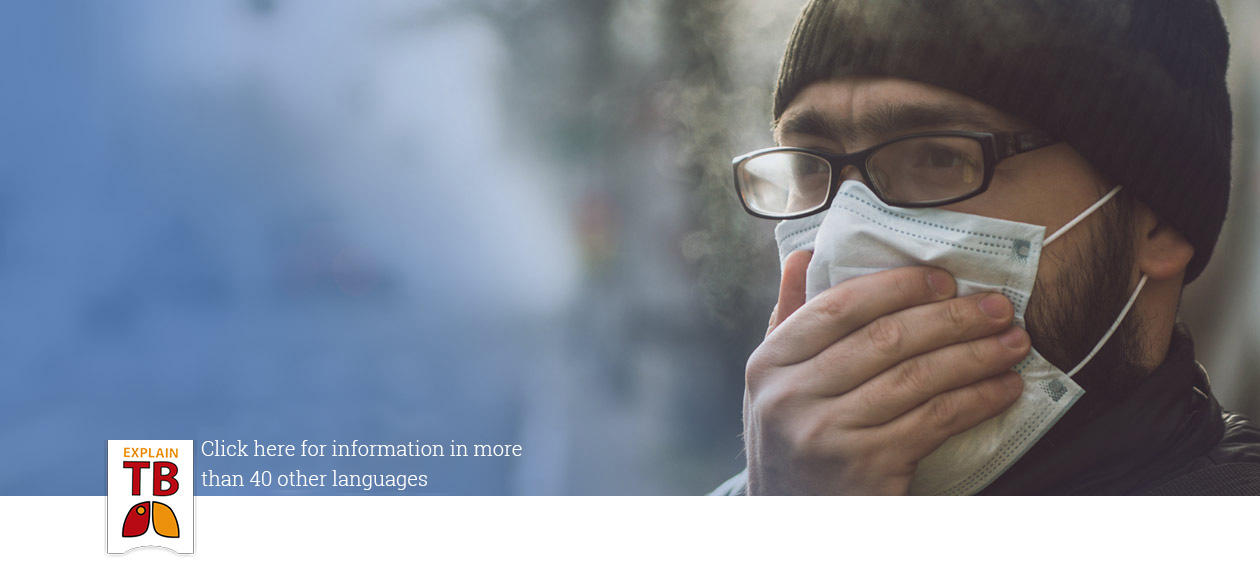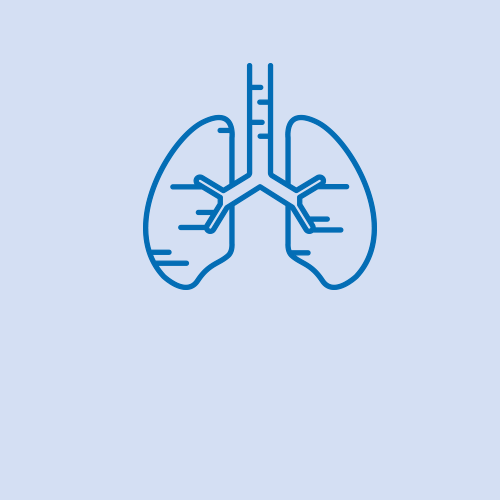Frequently asked questions about tuberculosis. (FAQs)
Latent infection
What is the difference between a latent infection with tuberculosis (LTBI) and tuberculosis disease?
If someone gets infected with tuberculosis, it’s called latent infection (LTBI) because the pathogens remain in the body in a dormant form. The infected feels healthy and are not contagious and most of them never get sick with tuberculosis. During their lifetime 5–10% of infected adults develop tuberculosis and must then be treated. The risk of becoming sick is highest in the first two years after infection and with a weak immunsystem. In more rare cases, it is still possible to become ill decades after infection.
last update February 2020
How do you test for latent tuberculosis infection (LTBI)?
A latent tuberculosis infection is defined by a positive blood test (see IGRA: interferon gamma release assay) or skin test (see THT/ TST: tuberculin skin test) and the rule-out of tuberculosis disease However, these tests cannot predict whether the infection will turn into a disease. The tests should therefore preferably be used on individuals who have a particularly high risk of progression from infection to disease. The risk is particularly high if you recently had contact with someone with contagious tuberculosis. In the case of infection, the LTBI test is positive 8 to 12 weeks after this contact. Also, there are people who have a higher risk of developing tuberculosis because of chronic immunodeficiency diseases (e.g. HIV) or drug-based weakening of the immune system (e.g. TNF alpha antibody therapy) and should be tested for LTBI.
A positive LTBI test result without knowingly contacting a person with contagious tuberculosis does not provide information about the time of infection. This can also have been many years ago.
last update February 2020
Is it necessary to treat a latent tuberculosis infection (LTBI)?
If a latent tuberculosis infection is diagnosed and the risk of development from infection to disease is relevantly high, a preventive therapy is recommended. This is the case if you have recently had contact with a person with infectious tuberculosis, have a chronic immunodeficiency disease, or if you take medikation that weaken your immune system like TNF-α-Inhibitors. Preventive therapy can significantly decrease the risk of developing tuberculosis disease.. Like the complete therapy of tuberculosis, it must be given over a long period of time but is treated with fewer drugs. To rule out that tuberculosis has already orccured, an X-ray examination of the lung must be carried out prior to preventive therapy. Sometimes other additional examinations are also necessary.
Children under 5 years of age are more often devolop tuberculosis disease than adults after a tuberculosis infection. Therefore, after close contact with a person with contagious tuberculosis, a preventive therapy will be started. The tests to find out if a child is infected (see tuberculin skin test or IGRA) can only provide a final result 8 weeks after contact. Therefore, the appropriate test is repeated after 8 weeks, and the preventive treatment is discontinued if the test does not detect infection.
A preventive therapy is not obligatory because you are not ill and therefore not contagious. If there is an increased risk of developing a disease, preventive treatment can significantly reduce this. Whether a preventive therapy makes sense should be decided together with an experienced doctor or the health office.
For more information about different preventive Treatment options see preventive Treatment.
last update February 2020
What is a tuberculin skin test (TST, Mendel-Mantoux text)?
The tuberculin skin test detects a latent tuberculosis infection (LTBI). It is carried out if infection is suspected by the public health instiute or doctor’s office A small amount of a liquid called tuberculin is introduced into the soft skin of the inside of the forearm with a needle. If you are infected with tuberculosis, a hardening develops there after a few days. A positive test result can also be observed in individuals who have received a BCG vaccination against tuberculosis in the past. Even nontuberculous mycobacteria (see NTM) can lead to a positive test result without being a tuberculosis infection. The tuberculin skin test should be conducted and evaluated by experienced personnel. In addition to TST, there are blood tests to detect a latent infection (see IGRA). A positive result initially only shows a latent tuberculosis infection. Further examinations are necessary to exclude a disease. If a latent tuberculosis infection (LTBI) has been diagnosed, preventive therapy should be initiated. This can significantly reduce the risk of disease.
last update February 2020
What is an IGRA (QuantiFERON test or ELISpot)?
An IGRA (: interferon gamma release assay) is a blood test that, like the tuberculin skin test (TST), detects a latent tuberculosis infection (LTBI). It is carried out if infection is suspected by the public health institute or doctor’s office. Two different IGRA tests, the QuantiFERON® and the ELISpot® are commercially available. An advantage of the IGRA tests over the tuberculin skin test is that the result is not affected by a prior BCG vaccination against tuberculosis. In addition, no second date for evaluation is necessary. If the test result is positive, further examinations are necessary to exclude a tuberculosis disease. If a latent tuberculosis infection (LTBI) has been diagnosed, preventive therapy should be initiated. This can significantly reduce the risk of disease.
last update February 2020
How is preventive therapy or chemoprevention carried out?
A latent tuberculosis infection (LTBI) can become a disease and should be treated preventively in case of a high disease risk. This is the case if you have recently been in contact with someone with contagious tuberculosis. Also, people with immunodeficiency diseases (e.g., HIV) or immunodeficiency therapy (e.g., TNF-alpha-Inhibitors) are particularly likely to develop tuberculosis. Children under the age of 5 are particularly likely to contract tuberculosis and should be treated as a preventative measure.
In contrast to complete therapy, a preventive therapy consists of fewer drugs. To exclude tha you already have tuberculosis disease, an X-ray examination of the lungs must be conducted before a preventive therapy is prescribed. Further examinations might be necessary.
For preventive therapy, there are various medications are available. Most experience consists of Isoniazid over 9 months. Shorter preventative treatments with Rifampicin for 4 months or Isoniazid together with Rifampicin for 3 months are also effective. The decision whether preventive therapy makes sense and which medication is best should be taken by an experienced doctor or the local health authorities.
last update February 2020
Interviews with experts and patients.



















